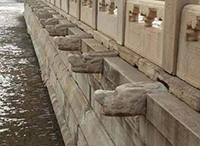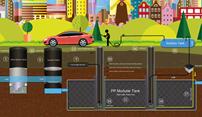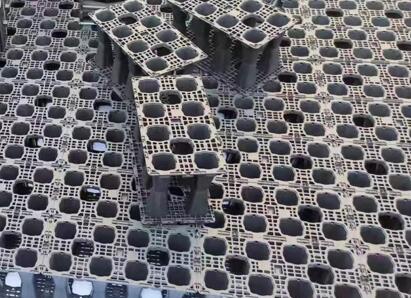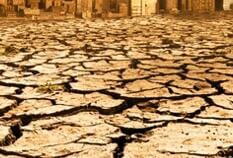Explore the German urban drainage system
In Germany, I had experienced several heavy rains, but I did not see waterlogging. The reason is related to Germany’s precautions in the process of urban construction and the importance it attaches to the drainage system. According to personal observations and access to information, the drainage system in German cities has two notable features.
The first feature of is the combination of above and below ground. Earlier, Germany’s urban drainage system was dominated by open channels, open ditches, and depressions. It often smelled bad in summer, leading to the spread of infectious diseases. From 1851 to 1867 alone, more than 18,000 people died of cholera in Berlin. After Berlin became the imperial capital in 1871, the government began to build an underground drainage system. By 1878, Berlin had built a 744-kilometer drainage network with the ability to drain heavy rain from day to night. In 1902, Berlin encountered a heavy rain that did not happen for a hundred years. As a result, the water flooded Berlin, which exposed the problems of the original design of the drainage system: first, the rain and sewage merged, and the rain and sewage were discharged into the river to pollute natural waters; 3. Debris blocking the pipeline affects the drainage function. In response to this situation, the Berlin municipal government began a large-scale renovation of the city’s drainage system to separate sewage and rainwater, forming a modern drainage system. At present, Germany ’s annual budget for the construction of drainage systems in large cities is as high as hundreds of millions of euros, and maintenance costs are maintained at around 5,000 euros per kilometer. According to statistics in 2010, Germany has built a public drainage pipeline of 540,000 kilometers, which can be around 13 and a half times around the earth, of which a special rainwater drainage pipeline is 66,000 kilometers long.
While attaching importance to the construction of underground drainage systems, it combined with the ground to compulsorily design and construct permeable pavement. In 1973, the German Ministry of Communications formulated the “Guide to the Design of Internal Drainage Systems in Pavement Structures”. In Germany, different areas will be paved with different permeable roads: places such as sidewalks, pedestrian streets, bicycle lanes, etc., where there is little pressure, permeable bricks are used, and the bricks are spliced with permeable filler materials; bicycle storage and parking For the ground, choose perforated concrete bricks; in residential areas, parks and street squares, solid bricks are used for paving the road, leaving gaps between the bricks. The walking path with high usage rate can be paved with fine gravel or small pebbles. After many years of hard work, 80% of the pavements in large cities in Germany are permeable. The construction of permeable pavement can help solve the problem of urban water accumulation on the one hand, and balance the urban ecosystem on the other. For example, rainwater seeps into the ground to supplement the groundwater source. In addition, there are many pores on the permeable ground, which increases the surface area of the ground and has a strong adsorption force for dust, which reduces dust and noise. In addition, Germany’s simulation of meandering natural river channels in the reconstruction of rainwater runoff open channels and open channels also played a role in improving the urban landscape.
The second feature is the combination of drainage and water storage: Germany does not blindly increase the pipeline during the construction of the rainwater drainage system, but uses a combination of drainage and storage strategy, while laying drainage pipes, while increasing the construction of storage tanks. At present, Berlin has 115 groundwater reservoirs with a total capacity of millions of cubic meters. If the heavy rain reaches the drainage system overload mark, the rainwater will enter the underground water reservoir through the drainage channel. When the drainage system returns to normal, the rainwater of the underground water reservoir will be introduced into the underground drainage system to avoid urban flooding caused by poor drainage. Therefore, it is rare to see the phenomenon of water accumulation after rain in Berlin. In addition, the groundwater reservoir can also play a role in filtering debris and purifying water quality.
Since the 1960s, Germany has also been devoted to the development of various rainwater infiltration devices. Newly-built industrial, commercial and residential communities all need to design rainwater utilization devices.

In recent years, Germany has begun to vigorously promote the “depression-seepage canal system”, which has achieved obvious water storage effects. The main feature of the system is that a sand-stone filling layer is added under the surface soil of the depression, and then a drainage pipe with holes is buried in the sand-stone filling layer to connect with the seepage channel to form a dispersed rainwater treatment system. In this way, the infiltration and filtering rainwater of low-lying grassland is stored through the infiltration channel, which further reduces the burden of the drainage pipeline.













